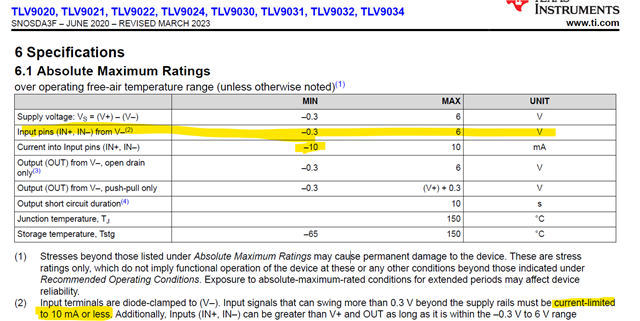Tool/software:
Hi,
For our application, the (IN-) goes to about -700mV to -800mV. However due to our circuit configuration, the current though the (IN-) should be less than 10mA.
So is it ok that we are exceeding -300mV as per abs max if the current though (IN-) is limited below 10mA?
Thanks,
Arturo

